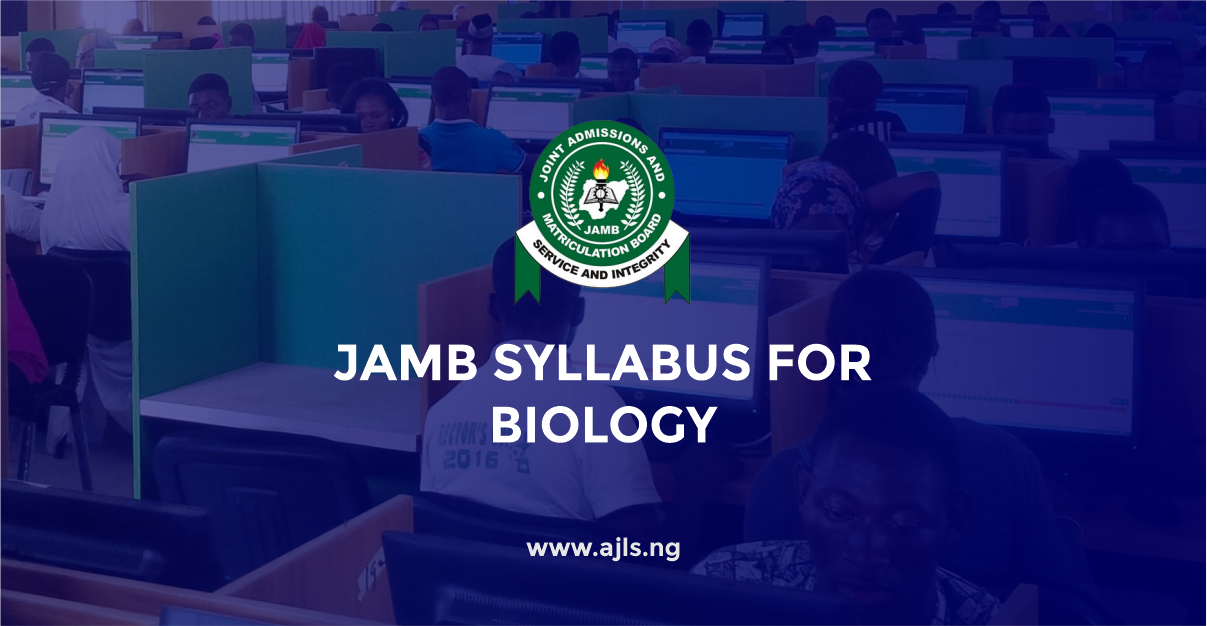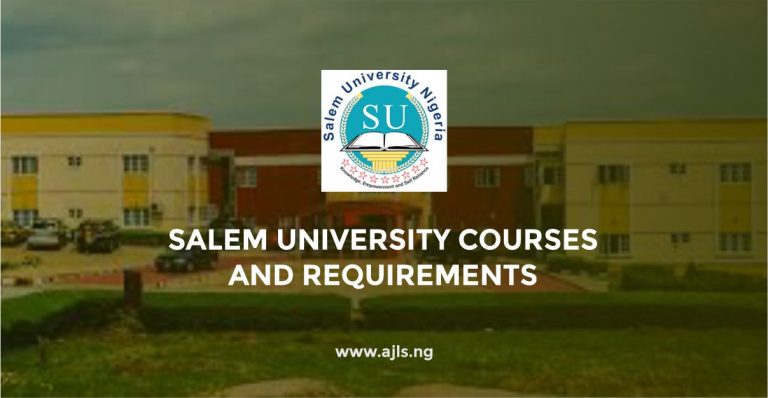JAMB Syllabus For Biology 2025

If you registered for the upcoming JAMB Examinations 2025 and Biology is one of your subjects, you are likely aware that Biology can be one of the most challenging subjects due to its detailed nature and the wide range of topics covered. Reading randomly without a clear guide can lead to wasted time on topics that may not even appear in the exam.
To make your study sessions more effective, consider using the JAMB Syllabus for Biology 2025 as your guide. This syllabus outlines all the key topics that JAMB intends to test, helping you focus on what truly matters.
Keep reading to the end to download the JAMB Syllabus for Biology 2025 in PDF. Additionally, we have provided a list of recommended study texts and shared some tips to help you maximize your study time efficiently.
JAMB Syllabus For Biology 2025
Below is a syllabus for biology examinations. It provides a detailed outline of topics and objectives designed to guide students in preparing for their exams.
| Topic | Subtopics | Candidate Objectives |
|---|---|---|
| Variety of Organisms | 1. Living organisms a. Characteristics b. Cell structure and functions c. Levels of organization i. Cell (e.g., Euglena and Paramecium) ii. Tissue (e.g., epithelial tissues and Hydra) iii. Organ (e.g., onion bulb) iv. Systems (e.g., reproductive, digestive, and excretory) v. Organisms (e.g., Chlamydomonas) | i. Differentiate between living and non-living things. ii. Identify structures of plant and animal cells. iii. Analyze functions of cell components. iv. Compare plant and animal cell structures. v. Trace logical sequences of organism organization. |
| Evolution | a. Monera (e.g., bacteria and blue-green algae) b. Protista (e.g., Amoeba, Euglena) c. Fungi (e.g., Mushroom and Rhizopus) d. Plantae i. Thallophyta (e.g., Spirogyra) ii. Bryophyta (e.g., mosses) iii. Pteridophyta (e.g., ferns) iv. Spermatophyta (Gymnospermae and Angiospermae) e. Animalia (Invertebrates and Vertebrates) | i. Analyze external features of organisms. ii. Trace structural complexity. iii. Track the life stages of organisms. iv. Show the transition from water to land life. v. Trace plant evolution. |
| Adaptations | a. Adaptive coloration b. Behavioral adaptations (e.g., in social animals) c. Structural adaptations | i. Describe organism adaptations to the environment. ii. Categorize countershading and warning coloration. iii. Explain behavioral adaptations in social insects. iv. Account for basking, territorial behavior, etc. |
| Internal Structure | 1. Plants: Root, Stem, Leaf 2. Mammals: Internal organs | i. Identify transverse sections. ii. Relate structure to function. iii. Describe supporting tissues and their arrangement. iv. Examine internal organs. |
| Nutrition | a. Modes of nutrition: Autotrophic, Heterotrophic b. Plant nutrition: Photosynthesis, Chemosynthesis, Mineral needs c. Animal nutrition: Classes of food, Food tests, Digestive system | i. Compare autotrophic and heterotrophic nutrition. ii. Explain photosynthesis and chemosynthesis. iii. Conduct food tests and identify nutrients. iv. Describe the mammalian alimentary canal and its processes. |
| Transport | a. Mammalian circulatory system (heart, arteries, veins) b. Plant vascular system (xylem, phloem) c. Media of transport (blood, lymph, cytoplasm) | i. Relate size/complexity to transport needs. ii. Explain circulatory and vascular functions. iii. Identify mechanisms (diffusion, osmosis). |
| Respiration | a. Respiratory organs: body surface, gill, trachea, lungs b. Aerobic and Anaerobic respiration | i. Outline respiration significance. ii. Explain glycolysis and the Krebs cycle. iii. Describe gas exchange mechanisms. iv. State economic importance of yeast. |
| Excretion | a. Excretory structures: kidney, lungs, skin b. Excretory products (plants, animals) | i. Define excretion and its significance. ii. Relate structure to function. iii. Identify excretory products and their economic importance. |
| Support and Movement | a. Tropic, tactic, and nastic movements b. Types of skeleton (exoskeleton, endoskeleton) | i. Determine the need for support and movement. ii. Describe supporting tissues in plants and animals. iii. Relate responses to stimuli in plants. |
Recommended Textbook For Biology Examinations 2025
These are the books recommended for your revision.
Ndu, F. O. C., Ndu, A., & Aina, J. O. (2001). Senior secondary school biology: Books 1-3. Lagos: Longman.
Odunfa, S. A. (2001). Essentials of biology. Ibadan: Heinemann.
Ogunniyi, M., Adebisi, A. A., & Okojie, J. A. (2000). Biology for senior secondary schools: Books 1–3. Macmillan.
Ramalingam, S. T. (2018). Modern biology. SS Science Series. New Edition. AFP Stan.
Stan, A. F. P. (2004). Biology for senior secondary schools. Revised Edition. Ibadan: Heinemann.
Stone, R. H., & Cozens, A. B. C. (1982). Biology for West African schools. Longman.
Usua, E. J. (1997). Handbook of practical biology (2nd ed.). University Press, Limited.
Idodo-Umeh, G. (2015). College biology. Idodo-Umeh Publishers Ltd.
Michael, M. C. (2018). Essential biology for senior secondary schools. TONAD Publishers Ltd.
Best Revision Tips For JAMB Biology 2025
Preparing for JAMB Biology can be challenging, but with the right approach, you can improve your chances of success. Here are some simple and effective revision tips to help you prepare for JAMB Biology 2025:-
- Begin by thoroughly understanding the JAMB Biology syllabus. Familiarize yourself with topics like genetics, ecology, reproduction, and human physiology. Knowing the syllabus helps you focus on what is most important.
- Organize your study sessions with a clear timetable. Allocate specific time for each topic, ensuring that difficult subjects get extra attention. Consistency is key.
- Ensure you use up-to-date textbooks, past questions, and other reliable study materials. Materials from reputable publishers, like those from authors like Ndu, Ogunniyi, and Ramalingam, can help you grasp concepts better.
- Solve past JAMB Biology questions to get familiar with the exam format. This helps you understand how questions are structured and improve your confidence.
- Studying in a group can help you discuss difficult topics and share knowledge. Learning from peers and teaching others can improve your understanding.
- Don’t hesitate to seek help from teachers, mentors, or online resources if you are stuck on a particular topic.
- Revision requires regular practice and a positive attitude. Stay motivated and avoid last-minute cramming.
Good luck! Do not hesitate to drop your question in the comments if you have any and we will respond shortly. Share this with other JAMBites.





